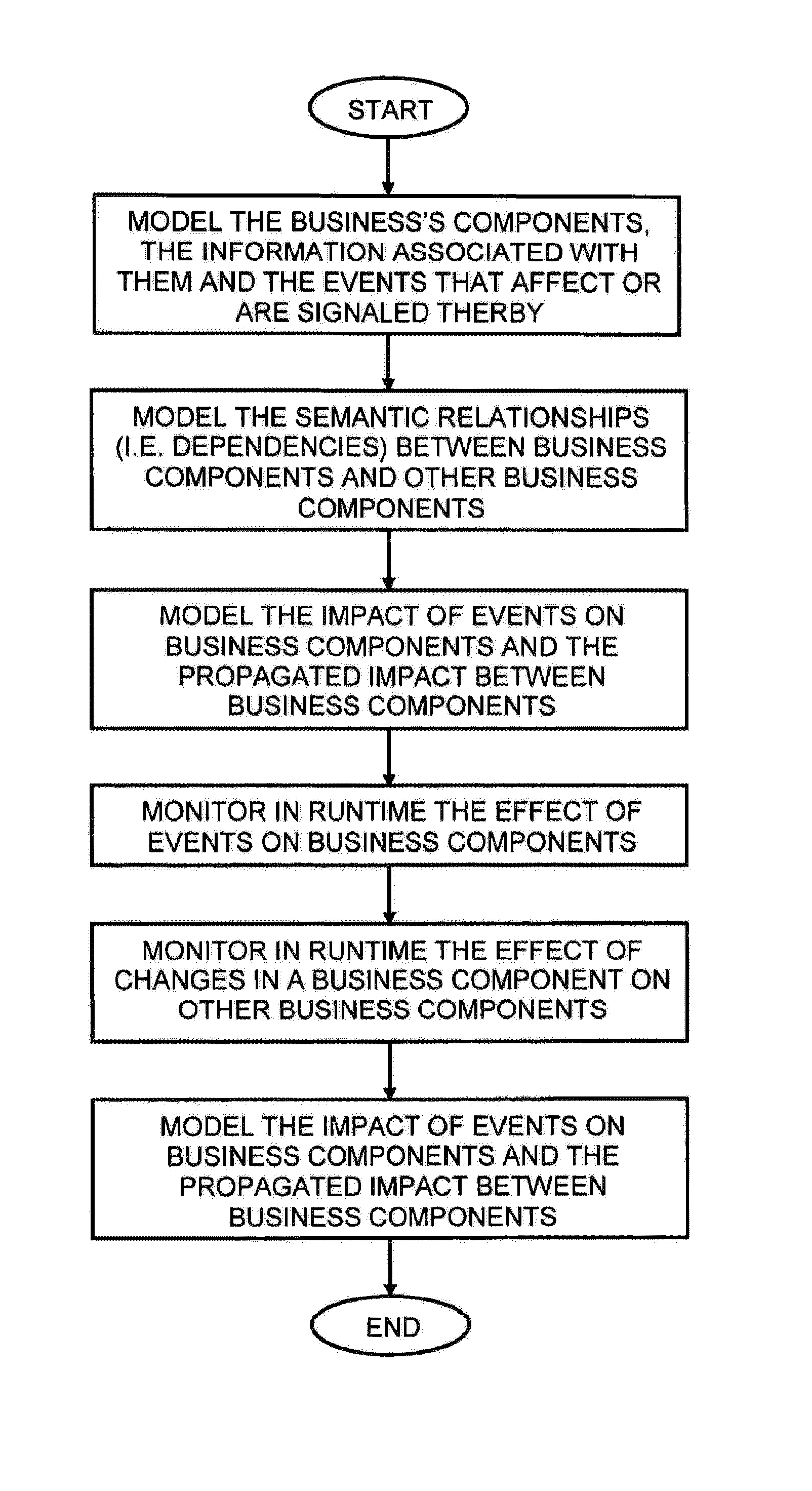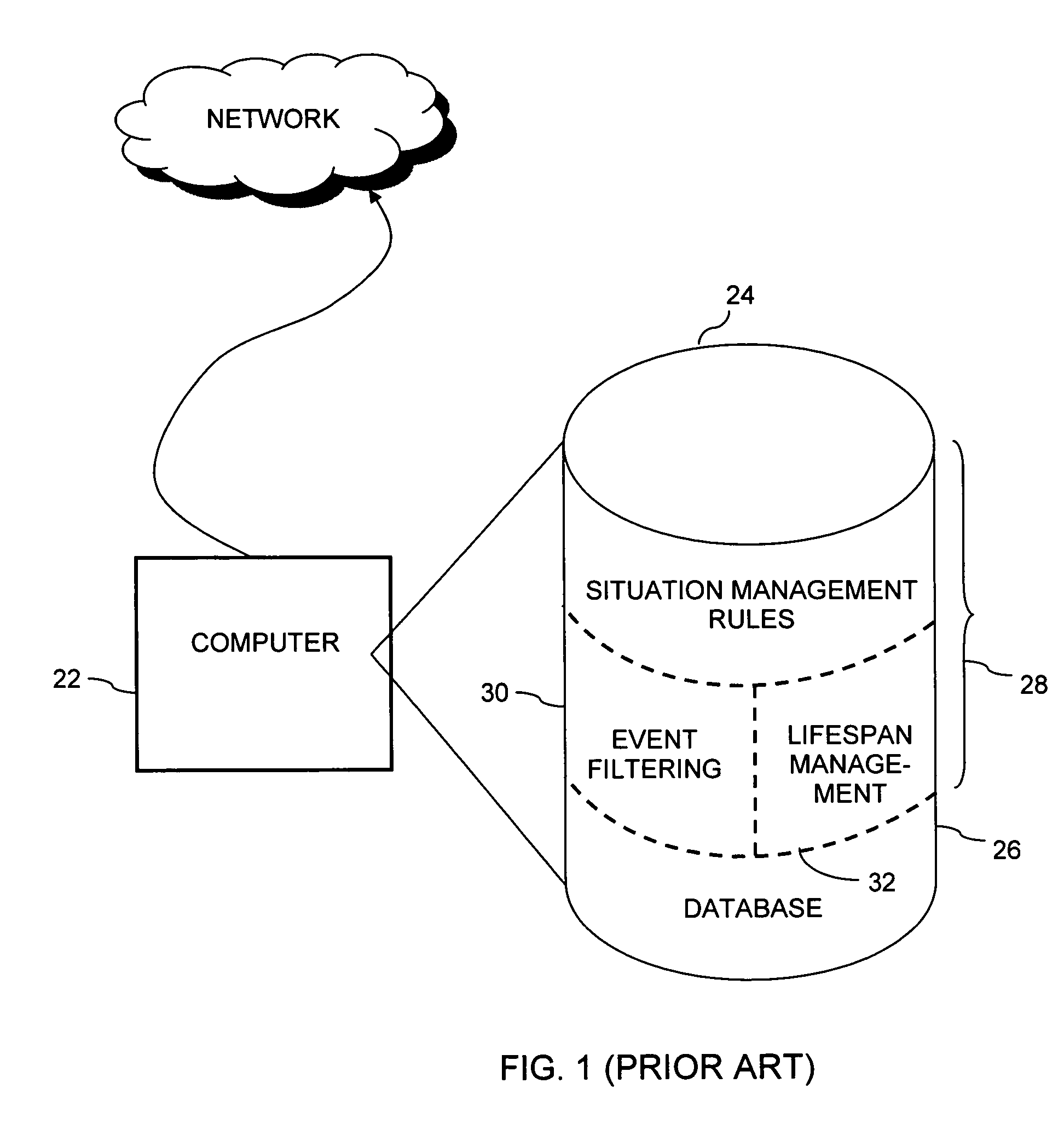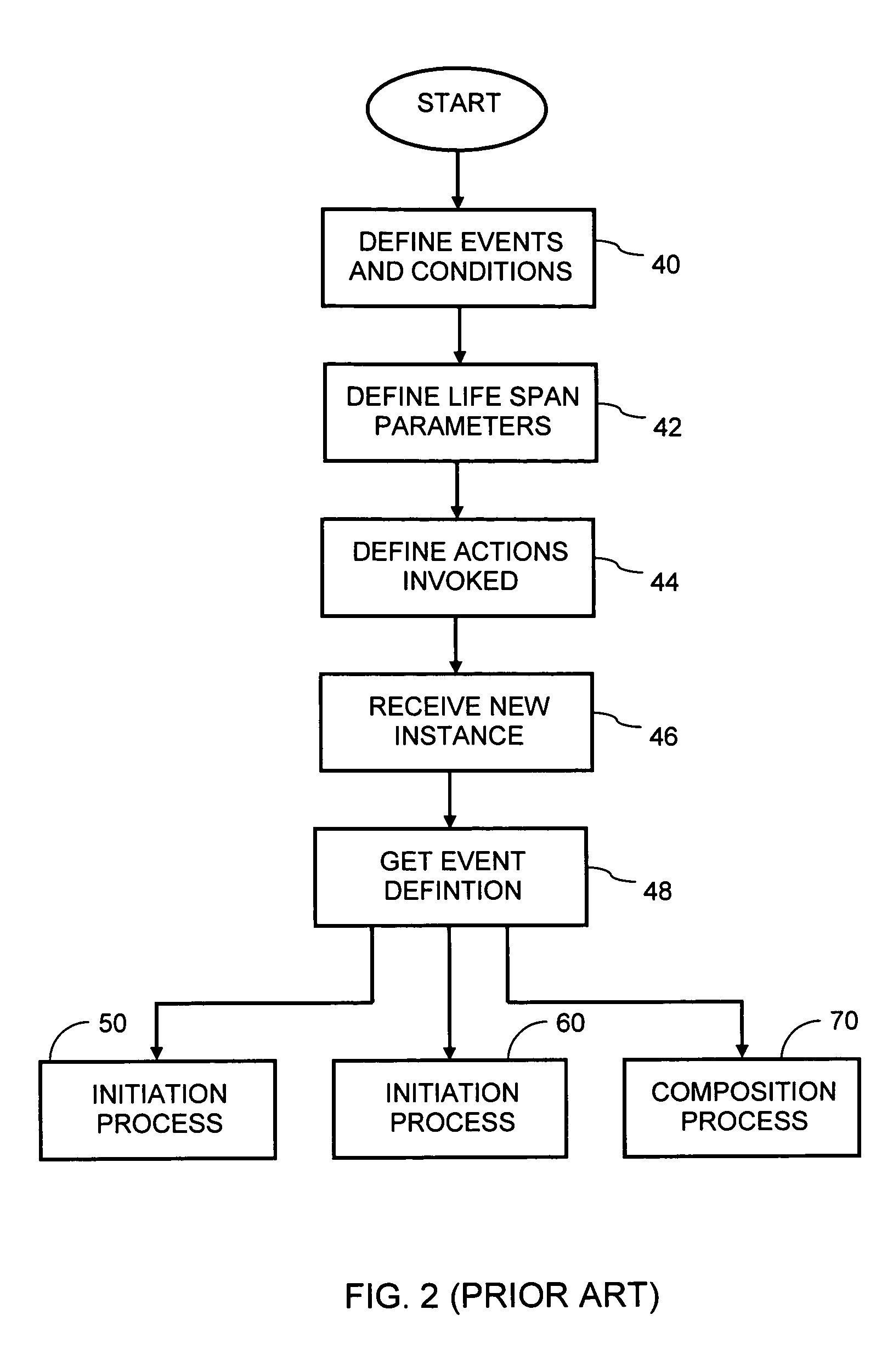Method and system for active monitoring of dependency models
a dependency model and active monitoring technology, applied in the field of event-driven systems, to achieve the effect of enhancing the semantics of defined dependency types
- Summary
- Abstract
- Description
- Claims
- Application Information
AI Technical Summary
Benefits of technology
Problems solved by technology
Method used
Image
Examples
example
[0114]FIG. 6 shows graphically a model of a business hierarchy created using the GUI 53 and depicted generally as 80. The model 80 shows three Websphere Application Servers denoted WAS1, WAS2 and WAS3, an Edge server a DB2 server and two applications—Authorization and Stock trade. For the applications to perform properly two out of the three WAS servers together with the Edge and DB2 servers are mandatory. In addition there are two roles, the first states that the event status_change has an affect on a WAS server by updating its status and the second states that upon status change of an application the event application_status is triggered.
[0115]The formal declaration of the model formatted for use with the situation awareness unit 55 as described above has the following format:
[0116]
dependency:name=mandatoryid=1target:entity type=applicationattribute:name=namevalue=Authorizationattribute:name=statevalue=state_oktarget:entity type=applicationattribute:name=namevalue=Stock Tradeattr...
PUM
 Login to View More
Login to View More Abstract
Description
Claims
Application Information
 Login to View More
Login to View More - R&D
- Intellectual Property
- Life Sciences
- Materials
- Tech Scout
- Unparalleled Data Quality
- Higher Quality Content
- 60% Fewer Hallucinations
Browse by: Latest US Patents, China's latest patents, Technical Efficacy Thesaurus, Application Domain, Technology Topic, Popular Technical Reports.
© 2025 PatSnap. All rights reserved.Legal|Privacy policy|Modern Slavery Act Transparency Statement|Sitemap|About US| Contact US: help@patsnap.com



